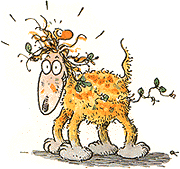Bass Akwards
Member
Use several males ...
Use several males ...
Back in the day, Vic High published a short guide to stabilizing an F-1 cross.
It was his simplified version of RRS, and uses multiple males. It's certain to be archived in several places online. Search under BCGA.
It's all well and good to use one male that displays trichomes, but they're few and far between, and almost never show up unless hundreds of sprouts are grown out. It's much simpler, and better breeding practice in the long run, to eliminate several males from a population, and use several others, than to pick out just one of them to use as a pollen source.
Here's a suggested standard for Male Inclusion: Go for the middle.
Several online commentators have stated that the first few males, the ones that are the earliest, fastest growers, have a genetic leaning towards hemp. Others have pointed out that the last males to show their sex have a propensity towards recessive traits.
If both of those notions are true, it's an opportunity to kill two birds with one stone. Out of 15 males, ( a reasonable number if 30 - 40 seeds are started ) eliminate the first and last few plants to grow sacks, and use the pollen of the four or five best looking, strongest smelling, and most vigorous plants in the middle of the pack.
RRS is a "line breeding" scheme that does not depend on back-crossing to achieve stable results. All it takes is time. Unfortunately, with most hobby growers, time and patience are in very short supply.
Use several males ...
Back in the day, Vic High published a short guide to stabilizing an F-1 cross.
It was his simplified version of RRS, and uses multiple males. It's certain to be archived in several places online. Search under BCGA.
It's all well and good to use one male that displays trichomes, but they're few and far between, and almost never show up unless hundreds of sprouts are grown out. It's much simpler, and better breeding practice in the long run, to eliminate several males from a population, and use several others, than to pick out just one of them to use as a pollen source.
Here's a suggested standard for Male Inclusion: Go for the middle.
Several online commentators have stated that the first few males, the ones that are the earliest, fastest growers, have a genetic leaning towards hemp. Others have pointed out that the last males to show their sex have a propensity towards recessive traits.
If both of those notions are true, it's an opportunity to kill two birds with one stone. Out of 15 males, ( a reasonable number if 30 - 40 seeds are started ) eliminate the first and last few plants to grow sacks, and use the pollen of the four or five best looking, strongest smelling, and most vigorous plants in the middle of the pack.
RRS is a "line breeding" scheme that does not depend on back-crossing to achieve stable results. All it takes is time. Unfortunately, with most hobby growers, time and patience are in very short supply.






